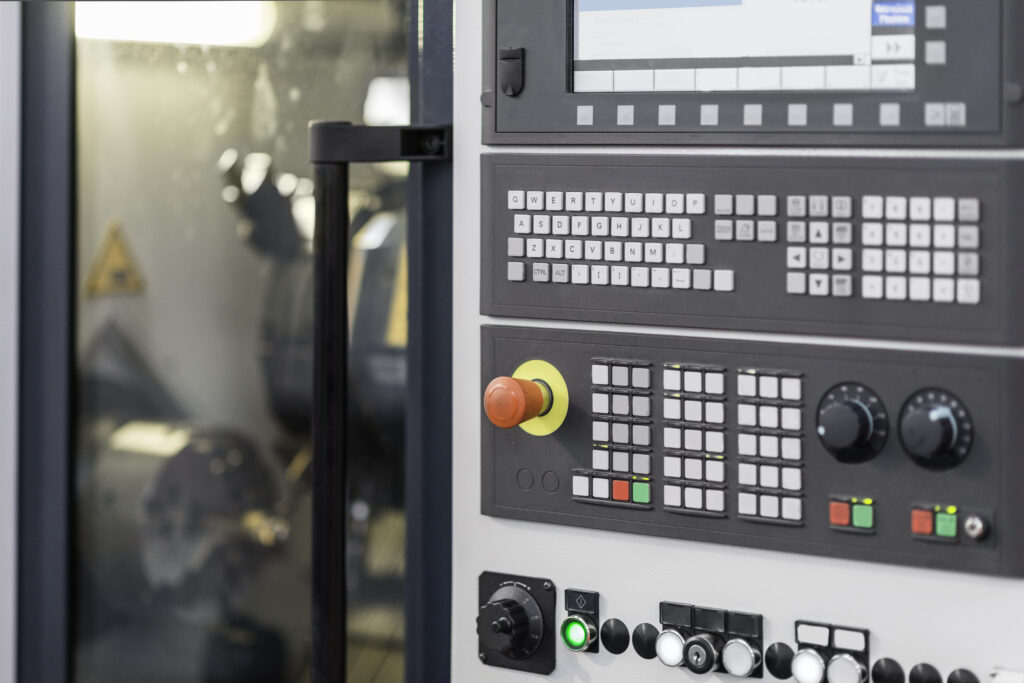A Fanuc control is a mission-critical piece of automation equipment that can begin to fail in several ways. While these “industrial grade” cnc control devices are rugged, they can begin to fail because of wear and tear. The controllers do have internal components that fail as time passes. Rarely, it will be obvious that the unit has failed or is suffering a serious drop in performance. In other cases, an engineer will need to examine the connections and power supply to determine if the controller is really the root of a performance issue. A failure in one of these controllers may be difficult to track down, though serious problems can actually be easy to detect.

Potential Warning Signs of Fanuc Control Failure
A major issue in the Fanuc Control tends to show up in one of three ways. The process it controls may just stop. Alternatively, the system may slow down or run irregularly. Think of a car engine developing problems with the fuel injection or electronic ignition. You will notice performance issues and may understand something connected to the engine is the problem. But, you may need an expert analysis to pin down the problem and then fix it.
In the case of a malfunctioning Fanuc Control, an engineer or tech needs to diagnose the problem and get the controller running as soon as possible. In the case of a production slowdown, you need to be able to identify the part that’s underperforming. It may be as simple as someone accidentally loosening up an output cable. However, many components in a Fanuc Control or connected to it may end up causing it to fail.
Fanuc Control Failure Points
The root cause of your Fanuc Control failing, aside from losing power, is going to come down to a fault in one of the numerous elements that take a signal from outside the device, direct it through a circuit board to another component and from there to an output device and onward out from the Fanuc Control to a component it controls or communicates with.
A controller only works if all of its internal components can process the inputs the device receives and then output the correct signals. Internally, the CPU, the memory, and communication interface all can suffer physical damage or suffer faults due to heavy use and, more rarely, due to age. Externally, power surges and environmental conditions can cause performance problems and outright failure. Experts say that most Fanuc control failures come down to three specific problems:
- Failure in a VCD.
- Failure of a field device.
- Problems with the power supply
- Bad network connections
- Configuration error
- Internal wiring problem
These devices, like all industrial components, have a life expectancy. You may get 10 years of service out of a Fanuc CNC mill’s motor but most business owners would go by a realistic life expectancy when planning to recondition or replace old components. The same is true for a Fanuc Control. Under ideal operating conditions the unit could last 20 years. This assumes a relatively clean environment, moderate temperatures, and low cycle rates. The variables that affect the controller’s service life and reliability are often external factors, things in the operating environment in other words.
External Causes of Fanuc Control Failure
A fault in the device may not be involved at all. For example, moisture and electronic “noise” can both cause performance problems. Excessive heat may also cause problems inside the Fanuc Control, problems which manifest as performance problems. Long-term exposure to heat, moisture, or electromagnetic radiation can also hasten the demise of the controller or a key internal component.
Remember that, like anything controlled by a computer, the code can become corrupted or can be erased. A power surge may cause this to happen, especially if your site is prone to blackouts and brownouts. Rarely, the code may fail because the system has been hacked.
A Fanuc Control may malfunction due to hacking or even accidental introduction of malicious code. These cyber-security considerations deserve their own blog. And, as Fanuc Controls and other connected devices become more common in factories and machine shops, the need for attention to this aspect of CNC operation may grow even more important.
Stockpile CNC Parts and Modules as Insurance Against Fanuc Control Breakdowns
Your Fanuc Control and the individual internal components should be quite durable and reliable, but components can fail or malfunction. Each Fanuc Control has several major components that can fail in various ways as time passes. The modules, memory, input-output connectors, network connections, and software can all fail in various ways. Often the process being controlled just stops, other times irregular performance will indicate a problem somewhere in the manufacturing system. You can minimize issues with a Fanuc Control by maintaining it properly. It may also be a good idea to keep backup Fanuc CNC Parts such as I/O units or other parts on hand. It may also be worth the investment to keep CNC machine tools up-to-date.
Get your Fanuc CNC machine back up and running.
TIE offers same day shipping on more than 100,000 Fanuc CNC parts in stock. We offer a 1 year in service warranty on all parts and repairs.
Shop PartsWas this helpful?
2 / 0